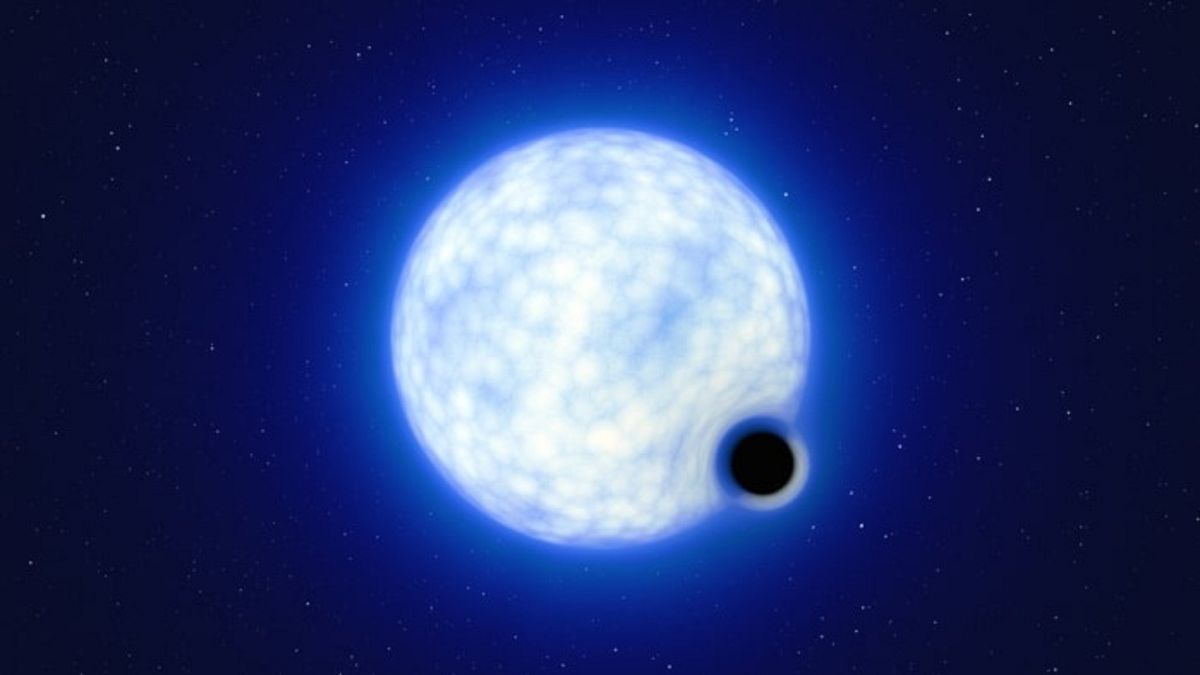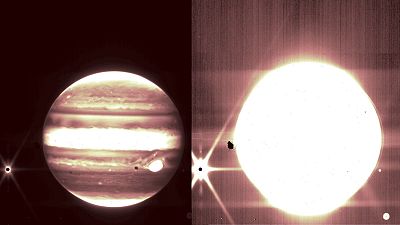Described as a “needle in a haystack”, the black hole seems to have been created without the usual explosion of a dying star.
The first “dormant” black hole has been discovered by astronomers who are calling it a cosmic “needle in a haystack”.
This black hole differs from every other one discovered so far because it is not emitting powerful X-ray radiation.
All other known black holes are extremely dense objects with such massive gravitational pull that not even light can escape.
It also doesn’t appear to have been born out of a supernova, the stellar explosion some stars experience at the end of their lives which leads to the creation of a black hole, further puzzling the team which discovered it.
This black hole has a mass at least nine times greater than our Sun (which is 333,000 times the mass of our planet Earth).
It is part of a binary system, with a star that has a mass around 25 times our Sun orbiting it - a star the team think will one day become a black hole, which could merge with the other one.
The binary system was detected in the Tarantula Nebula region of the Large Magellanic Cloud galaxy, located about 160,000 light years from Earth. A light year is the distance light travels in a year, around 9.5 trillion km.
While the scientists believe it is the first dormant black hole to be discovered, they are not thought to be especially rare.
"The challenge is finding those objects," said Tomer Shenar, a research fellow in astronomy at Amsterdam University, lead author of the study published in the journal Nature Astronomy.
They are hard to detect because they hardly interact with their surroundings, and a number of previous candidates for the status of “dormant black hole” have been debunked by further study - including by members of the team that found this one.
"Black holes are intrinsically dark objects. They do not emit any light. Therefore, in order to detect a black hole, we usually look at binary systems in which we see one luminous star moving around a second, not-detected object," said study co-author Julia Bodensteiner, a postdoctoral research fellow at the European Southern Observatory in Munich.
"We identified a needle in a haystack,” Shenar added.
‘First object of its kind discovered’
It is thought that most black holes are born from supernova explosions as star’s collapse in on themselves. In this case, a star perhaps 20 times our Sun's mass blew some of its material into space, then collapsed in on itself without an explosion.
The shape of its orbit with its companion offers evidence for the lack of an explosion.
"The orbit of the system is almost perfectly circular," Shenar said.
"In so-called dormant black hole systems, the companion is far enough away that the material does not accumulate around the black hole to heat up and emit X-rays. Instead, it is immediately swallowed by the black hole," he added.
If a supernova occurred, the blast's force would have kicked the newly-formed black hole in a random direction and yielded an elliptical rather than circular orbit, Shenar noted.
"It's the first object of its kind discovered after astronomers have been searching for decades," said astronomer and study co-author Kareem El-Badry of the Harvard & Smithsonian Center for Astrophysics.
The researchers used six years of observations from the European Southern Observatory's Chile-based Very Large Telescope.



